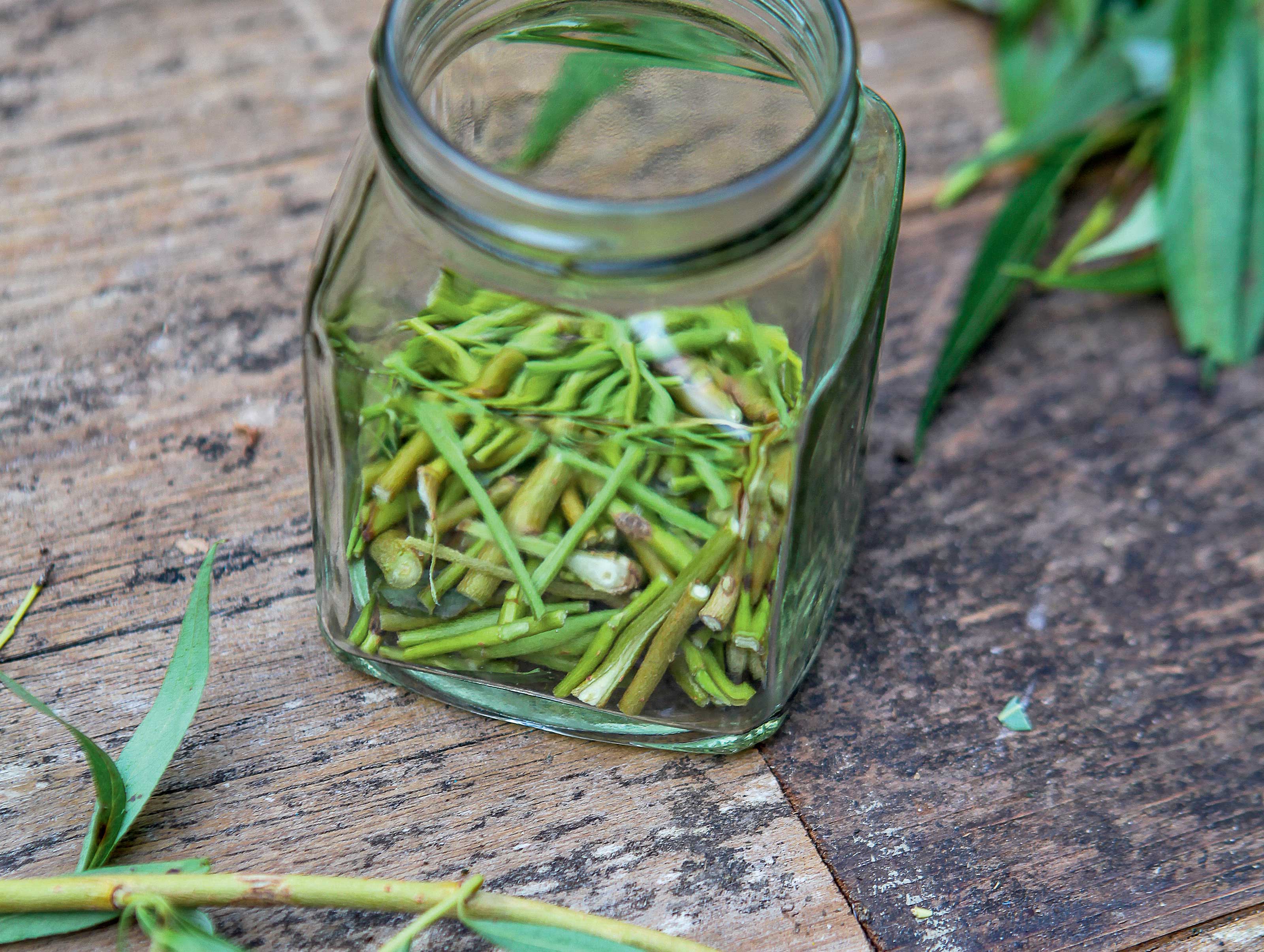What is willow water? This super easy trick will cost you nothing and creates a miracle elixir for healthier plants
Make your own willow water for healthier, pest-free, fertilized plants, or to make propagating plants almost fool-proof. Here's how


Have you heard of willow water before? If you're a plant aficionado, you might be familiar with this near-magical elixir's qualities, but otherwise, you're about to discover what might be the best thing you could try for your plants.
It's something that horticulturists use for many purposes, whether making plants healthier, or in propagating plants to stimulate root growth on a cutting, and it can be used for both garden and indoor house plants.
Best of all, this super easy-to-make natural concoction supports the growing of plants without the need for harmful and toxic chemicals. Anyone can harness the properties of the humble willow tree to supercharge plants and elevate their growing capabilities this year. Here's how.
What is willow water?
Willow water is made from the leaves and branches of your average willow tree. By turning these basic branches into willow water you unlock its transformative qualities that breathe life into plants and will be useful to every gardener. 'Willow water is a natural, organic plant growth stimulant that has been used for centuries to help promote healthy plant growth,' says Sara Lunberg from Bloom and Haul. 'It's made from willow branches, which contain a natural growth hormone called auxin. This hormone can help plants to grow stronger and healthier, making it a popular choice for both indoor and outdoor gardening.'
As you might imagine, willow water isn't a new idea. ‘This organic plant growth stimulant has been used for centuries to help promote healthy plant growth,’ says Sara.
What does willow water do?
Willow water has numerous benefits. The willow holds two specific substances that promote growth, Indolebutyric acid (IBA) promotes the growth of roots, and salicylic acid creates a natural defense system against pests. 'It can help to promote root growth and increase the overall strength, this, in turn, can help to improve the plant's resistance to disease and pests,’ Sara explains, ‘as well as improve its ability to tolerate stress, such as drought or extreme temperatures.’
'When willow branches and leaves are left to soak in water, the IBA seeps out of the willow and into the water, creating a natural solution that can help lateral shoots and buds and new roots grow,' adds Emma Loker, author at DIY Garden. 'This natural fertilizer provides all the essential nutrients needed to grow healthy plants quicker. A dose of this miracle elixir will be sure to revitalize your plants after the long cold winter and harsh frosts.'
The Livingetc newsletters are your inside source for what’s shaping interiors now - and what’s next. Discover trend forecasts, smart style ideas, and curated shopping inspiration that brings design to life. Subscribe today and stay ahead of the curve.
This willow mixture can also be used on indoor plants. Being inside these plants tend to get less water, sun and nutrients that they need, willow water can be a helpful solution to this problem. ‘The IBA in willow water helps indoor plants grow new roots and buds, just like giving them plant food bought from the shop, however, doesn't contain any harsh, nasty chemicals,’ says Emma. This is especially great for those of you with young children or pets who were reluctant to use traditional fertilizers in the home.
How do I use willow water to water plants?
Once you have made your willow water just simply dose your plants in it like you would a normal soluble fertiliser. Emma reminds us to dilute the willow water with regular water at a ratio of 1:10. 'Willow water contains a high concentration of auxins, which can stunt plant growth if applied straight to your plants' she warns.
Once diluted the mix can be spread liberally across your garden and indoor plants.
How do I use willow water to propagate cuttings?
If you're looking to propagate plants from cuttings, there are a couple of ways to use willow water to stimulate root growth. You can simply place the cutting in a small amount of the water for several hours, allowing it to soak into the plant.
Alternatively, if you're using a medium like sand, moss or perlite to propagate, you can simply water this a couple of times with your willow water, which should be enough to stimulate the root growth.
How do I make willow water?
Now that you have learnt about all the wonderful benefits of willow water, we bet you are eager to get your hands on some. Lucky for you it is incredibly easy to make at home.
Stephanie Rose, creative gardener, permaculturist, and herbalist behind the popular website Garden Therapy and author of Garden Alchemy, Quarto Books, is eager to inspire DIY gardeners to take control of their garden care and embrace creativity. She has shared her easy recipe for willow water which is sure to be a success.
You'll need
- Young willow branches, the diameter of a pencil or smaller
- Boiling water
- Glass jar
1. Harvest young branches of a willow tree, ideally first-year growth.
2. Remove and compost all of the leaves and cut the branches into 1-inch pieces.
3. Fill a jar half full with branches and pour boiling water over the branches to fill the jar. Allow to steep overnight; strain the next day.
4. Soak new cuttings in willow water before rooting or use it to water cuttings. When rooting cutting in water, dilute willow water to half strength. Willow water can also be used to water seedlings. Store willow water in the refrigerator for up to 2 months.
Garden Alchemy, by Stephanie Rose
Learn all about the art of garden alchemy and how to make a plethora of organic fertilizers, plant elixirs, potting mixes, and pest deterrents. Willow water is just the start of your journey into this wonderful world.

Formerly a news writer for Livingetc, Amy completed an MA in Magazine Journalism at City, University of London, and has experience writing for Women’s lifestyle publications across arts, culture, and beauty. She has a particular love for the minimalist aesthetic mixed with mid-century furniture, especially combining unique vintage finds with more modern pieces. Her previous work in luxury jewellery has given her a keen eye for beautiful things and clever design, that plays into her love of interiors. As a result, Amy will often be heard justifying homeware purchases as 'an investment', wise words to live by.

